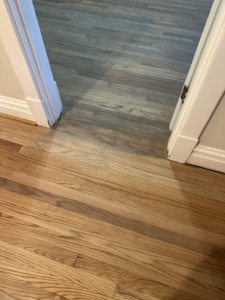Keeping pests at bay is important for human health and safety, environmental preservation, and maintaining the structural integrity and value of homes, businesses and gardens. Pest control strategies can range from prevention to suppression to eradication. Contact Coquitlam Pest Control now!
Correct identification of pests is essential to developing a control strategy. Some strategies use natural mechanisms – predators and parasites, for example – to keep populations below damaging levels. Others are more complex, such as introducing microorganisms (like bacteria or nematodes) engineered to suppress insects.

Pest control involves preventing, deterring, or eliminating pests from infesting people’s homes and businesses. Prevention methods include removing food and water sources, reducing the number of places where pests can hide, and making it difficult for them to get inside. Physical control methods, such as blocking entryways and destroying nests, are also common pest-control techniques. Chemicals used to kill or control pests are often called pesticides. They include herbicides, fungicides and insecticides.
Some pests cause serious health problems, such as rats and cockroaches, while others are more of an annoyance, like wood-destroying beetles and moths. In addition, some pests can produce allergens that trigger asthma attacks or allergic reactions in people. In addition, they may contaminate food, transmit diseases, or damage property. People generally tolerate a certain number of pests in their homes and business environments, but take action when the numbers become unacceptably high or when the damage becomes significant. These levels are known as action thresholds.
Pests can be detected by observing their behavior and examining the damage they cause or leave behind. Some pests are continuous, such as cockroaches and bed bugs, and need regular monitoring for signs of infestation and their impact on the environment and human health. Other pests are sporadic, such as mosquitoes and flies. Monitoring is usually done by trapping or scouting, depending on the kind of pest being monitored.
Many pests are attracted to clutter, garbage and other waste, which provides hiding places and food sources. They can also be attracted by warm, moist or dry conditions. Some, such as ants, bees and wasps, have aggressive behaviors or sting people when they come too close. Others have a frightful appearance, or transmit disease, such as cluster flies and house centipedes.
To reduce the need for pesticides, schools can implement integrated pest management (IPM). This includes monitoring pest populations and taking steps to eliminate conditions that attract them. Examples of IPM practices in schools include storing food safely and moving dumpsters and other waste receptacles away from buildings. Educating students and staff about how to prevent pests can also help.
Suppression
Suppression is an important part of pest control. It involves actively managing pests and pest populations without using chemicals. It usually includes monitoring and scouting to identify pests, determine the damage they cause, and assess whether action is necessary. Monitoring and scouting can be done by visual inspection, trapping, or identifying and counting pests. This can be done for insect, mollusk, and vertebrate pests; weed pests; or plant diseases, such as nematodes, fungal disease spores and pathogens that affect animals and plants.
In some situations, environmental conditions and cultural practices can help to prevent or suppress pests. For example, temperature controls — hot or cold — can kill or slow down the life cycle of some pests. So can adjusting watering, fertilizer, or planting schedules to suit climate and season. Sanitation practices can also prevent and suppress pests by improving cleanliness and removing food, shelter and harborage. This can be done in agricultural settings to reduce the carryover of pests from one field to another; in urban and industrial areas by reducing garbage and waste; or in homes by properly storing food, putting out reusable trash containers, and maintaining yard equipment.
A more natural form of pest control involves introducing the predators of a particular pest into an area to keep its population low. This is known as biological pest control or biocontrol. This is generally one of the first steps in an integrated pest management (IPM) program. It is also the oldest form of pest control. The natural enemies of insects include predators, parasitoids and pathogens. Those that control weeds are often referred to as competitors or herbivores.
Eradication is a rare goal in outdoor pest control because it can be difficult to achieve. It is, however, sometimes attempted for some exotic pests, such as Mediterranean fruit flies and gypsy moths, that have become established in a given region. In indoor environments, eradication is more common because it is easier to confine pests to a specific area.
It’s important to remember that pests are not just a nuisance in our homes. They can also contaminate food and make asthma and other health problems worse. Everyone has a role to play in safe pest control, from homeowners to landlords and maintenance workers.
Host Resistance
Host resistance is a way to reduce the need for chemical pest control by strengthening a plant’s ability to protect itself from disease and herbivory. It is a type of vertical resistance that targets specific strains of pathogens and pests rather than broad-spectrum chemicals. It can also help reduce the use of chemical fertilizers and improve soil health.
In general, host resistance mechanisms are developed in response to coevolutionary interactions between a plant and a pathogen or pest. The two organisms are always changing and adapting in their search for food and resources. This means that plants with resistance genes will be better equipped to survive than those without them, and so will the pathogen or pest. This is known as antibiosis.
The most common form of host resistance involves a physical or chemical property that makes the plant unpalatable to herbivores or pests. This can include things like a thick epidermis, hairs or waxy surface that make the plant unattractive or unpleasant to feed on. This type of resistance is called antixenosis and can be a very effective way to prevent herbivores and pests from feeding on the plant. Alfalfa, for example, is bred with dense hairs and a waxy surface to deter the spotted alfalfa aphid from eating it.
Other forms of host resistance involve a direct interaction between the plant and the pathogen. This can occur when the plant is genetically resistant to a particular virus, and this resistance is expressed as reduced within-plant virus multiplication rates. Other types of resistance, such as reducing virus titre and symptom reduction, do not place any selection pressure on the virus to evolve a higher multiplication rate.
Finally, some resistance can be achieved through competition between different species of plants or within the same crop. For example, in the case of nematodes, there are plant varieties that compete for nutrients with the worms, thereby limiting their growth and preventing them from gaining access to needed food.
The development of these types of strategies can help decrease the need for chemical pesticides, which are often costly and potentially hazardous to human and animal health. They can be used in conjunction with other forms of pest control, including crop rotation, intercropping and biological control techniques such as parasitism.
Natural Forces
Natural forces can limit pest population densities or damage, and are often the first line of defense. They can include predators, parasitoids and pathogens that target pest species or their hosts. Natural enemies of insects are usually referred to as biological control agents, and are an integral part of integrated pest management (IPM) programs that help reduce the need for chemical pesticides in agriculture. They can be introduced to agricultural crops as predatory or parasitic insects and mites, or pathogens, like bacteria such as Bacillus thuringiensis that are released in the field to produce proteins toxic to unwanted insects.
Other natural forces that can control pests include weather conditions. Extreme temperatures, rainfall and other environmental factors affect the growth of pests or their host plants. They may also kill or suppress them by interrupting their development or reproduction.
Many homeowners are able to use their own skills to prevent pest infestations and damage. Performing regular inspections of the property and sealing cracks or openings can deter rodents, birds and other pests from entering the home or building. Keeping garbage, compost and other materials away from the house can also deter some pests. Regularly trimming trees and shrubs and keeping them free of debris can also prevent shelter for pests, and removing any weeds that could be hiding or providing food for them.
In addition to prevention and suppression, eradication is the ultimate goal of pest control in certain cases. It is a very rare goal in outdoor pest situations, but can be accomplished in some indoor environments such as health care, food processing, food storage or preparation facilities and school kitchens.
A comprehensive pest control program should use a combination of methods, including preventive and sanitation measures, physical controls and biological controls to reduce or eliminate a pest problem before it becomes a nuisance. These techniques are best used in conjunction with monitoring and preventive tactics, and should always be performed in a manner that minimizes risks to human health, beneficial and nontarget organisms and the environment. Professional pest control services will choose the most appropriate pest control methods for each situation and will carefully consider any risks that may be present in an area or facility.








